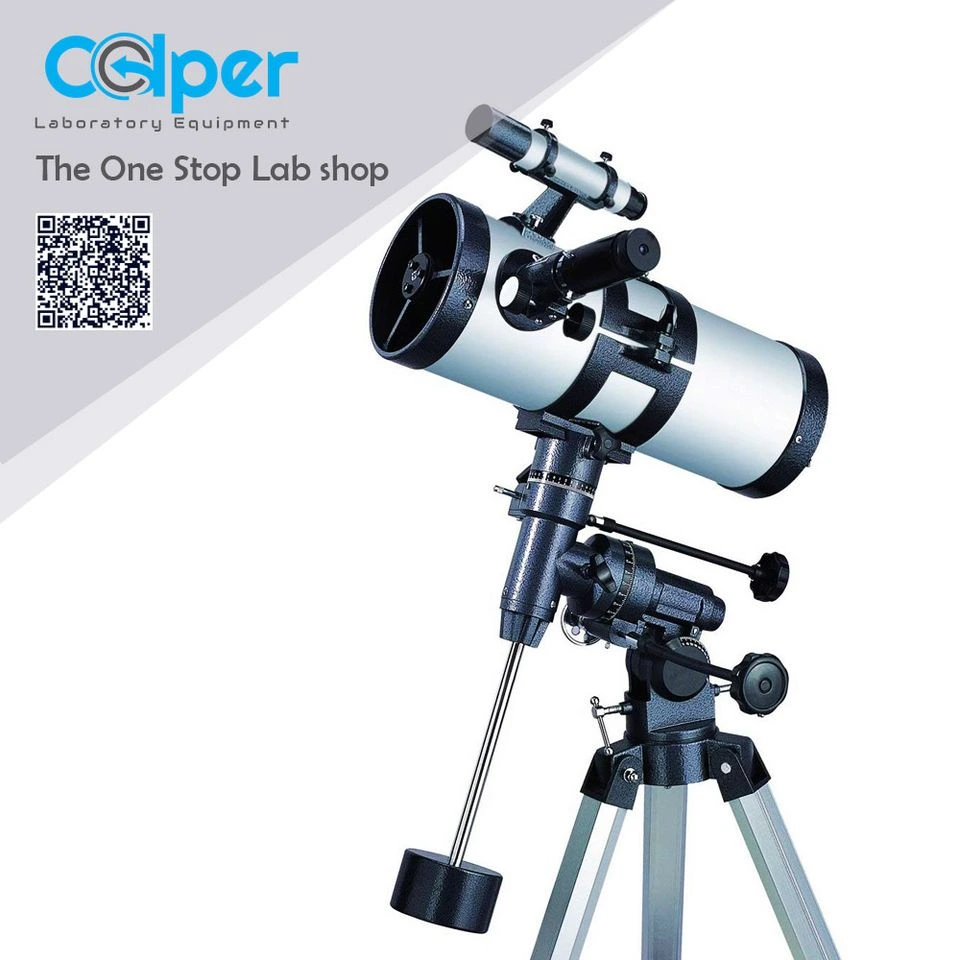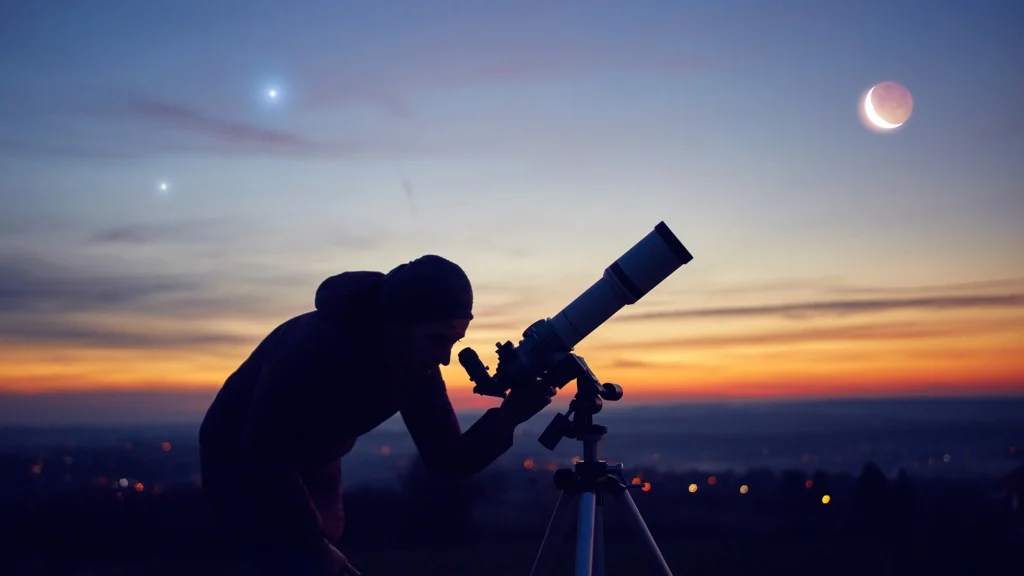No products in the cart.

At Colper, we have always been captivated by the night sky. Our island, with its low light pollution in rural areas and breathtaking vistas, offers an ideal canvas for amateur astronomers. Among the various types of telescopes, a reflector telescope stands out as an excellent choice for both beginners and intermediate stargazers. Its design allows for clear, bright views of distant celestial objects, making it perfect for exploring planets, nebulae, and star clusters visible from our island’s unique skies. If you’re starting your journey with a telescope Sri Lanka, this guide shows what’s possible.
Understanding the Reflector Telescope in Sri Lanka

A reflector telescope in Sri Lanka uses mirrors instead of lenses to gather light. This design reduces chromatic aberration, a common issue in refractor telescopes, where colors can blur at high magnification. The primary mirror captures light and reflects it to a secondary mirror, directing it into the eyepiece. This mechanism allows reflector telescopes to have larger apertures at lower costs compared to equivalent refractors.
For stargazing in Sri Lanka, where light pollution varies depending on your location, the reflector’s larger aperture makes it easier to observe faint objects such as distant galaxies and nebulae. It is also easier to maintain and more durable for outdoor use in our tropical climate.
Proper alignment and occasional maintenance are crucial, as even a slight misalignment can affect clarity—something explored in troubleshooting a reflector telescope: a guide to collimation and more.
What Planets You Can See with a Reflector Telescope in Sri Lanka

With a good-quality reflector telescope, you can enjoy stunning planetary views from Sri Lanka. Jupiter—with its prominent bands and Galilean moons—is a spectacular target. Saturn’s rings are another highlight, and even the Cassini Division, the dark gap in the rings, becomes visible under moderate magnification.
Mars, when closest to Earth, can reveal its polar ice caps and surface markings. Venus displays phases similar to the Moon, while Mercury, though challenging due to its proximity to the Sun, is visible during twilight hours. If you’re planning regular stargazing Sri Lanka sessions, note how these targets change seasonally.
Observing planets isn’t just about spotting them; you can track their motion across the sky over weeks and months, enhancing both your understanding of orbital mechanics and your appreciation of our solar system.
Ensuring your mirrors are properly aligned will greatly improve planetary clarity, echoing the importance of collimation as outlined in troubleshooting a reflector telescope: a guide to collimation and more.
Exploring the Moon’s Surface
Few sights in the night sky match the Moon’s beauty through a reflector telescope. Craters, mountain ranges, and the lunar maria can be observed in remarkable detail. Depending on the phase, shadows cast by crater walls provide a three-dimensional effect, making features pop. If you’re researching telescope price Sri Lanka, remember even modest apertures show impressive lunar detail.
Sri Lanka’s tropical climate allows for clear nights during both dry and certain wet-season periods. Observing the Moon during the waxing or waning phases can be particularly rewarding because the contrast of shadows against illuminated areas reveals intricate topography.
Even with a small to mid-sized reflector telescope, you can follow lunar libration—the subtle rocking of the Moon—and see previously hidden regions come into view over days and weeks.
Stargazing Deep-Sky Objects in Sri Lanka
Reflector telescopes excel at gathering faint light, making them ideal for deep-sky observations. From Sri Lanka, you can see star clusters like the Pleiades and Hyades, globular clusters such as M13, and nebulae including the Orion Nebula. These are classic deep sky objects Sri Lanka observers hunt for.
These objects require patience and a dark location. While city lights in Colombo or Kandy can obscure faint stars, venturing into the countryside or coastal areas significantly enhances visibility. Observing deep-sky objects is also a test of your telescope’s optics and setup, reinforcing the value of learning precise focusing and mirror alignment.
Attention to alignment and focus—topics explored in troubleshooting a reflector telescope: a guide to collimation and more—can make a notable difference in seeing these dim objects clearly.
Seasonal Highlights in the Sri Lankan Sky
Sri Lanka’s equatorial position provides unique opportunities to observe both northern and southern celestial objects. During the monsoon season, clearer skies appear mostly in the east coast and central highlands.
In December and January, Orion dominates the night sky with its iconic belt, while during April and May, Scorpius and its red supergiant, Antares, become prominent. The Milky Way’s core can be glimpsed during summer months, offering a spectacular view of star-dense regions. Seasonal awareness allows stargazers to plan sessions efficiently and experience the variety of celestial sights throughout the year.
Enhancing Your Stargazing Experience
Using a reflector telescope in Sri Lanka goes beyond simply observing. Pairing your telescope with a star map or a mobile astronomy app can make finding objects faster and more rewarding. Accessories such as Barlow lenses, filters, and sturdy mounts can expand viewing possibilities. A stable Dobsonian telescope Sri Lanka setup is a popular, beginner-friendly option.
Moreover, regular maintenance—including cleaning mirrors, ensuring stable mounts, and confirming collimation—keeps your telescope performing optimally. Venturing into darker rural locations and avoiding nights with heavy cloud cover will also enhance your experience. If you plan to buy telescope Sri Lanka options locally, match the aperture and mount to your observing goals.
Reflector telescopes invite curiosity, patience, and a sense of adventure. The more you explore, the richer your understanding of celestial mechanics, star formations, and planetary behavior becomes. Observing the Sri Lankan night sky is a journey that blends science, art, and personal discovery in one seamless experience.
At Colper, we delight in helping enthusiasts make the most of their reflector telescopes. By combining the right equipment, careful observation, and attention to alignment, you can uncover the hidden wonders of our sky—from shimmering star clusters to the intricate details of distant planets. Small adjustments and a bit of care, as emphasized in troubleshooting a reflector telescope: a guide to collimation and more, can transform your stargazing into an unforgettable adventure.
Sri Lanka’s night sky is a treasure, and with a reflector telescope in hand, every stargazer can experience its magic in stunning detail.
